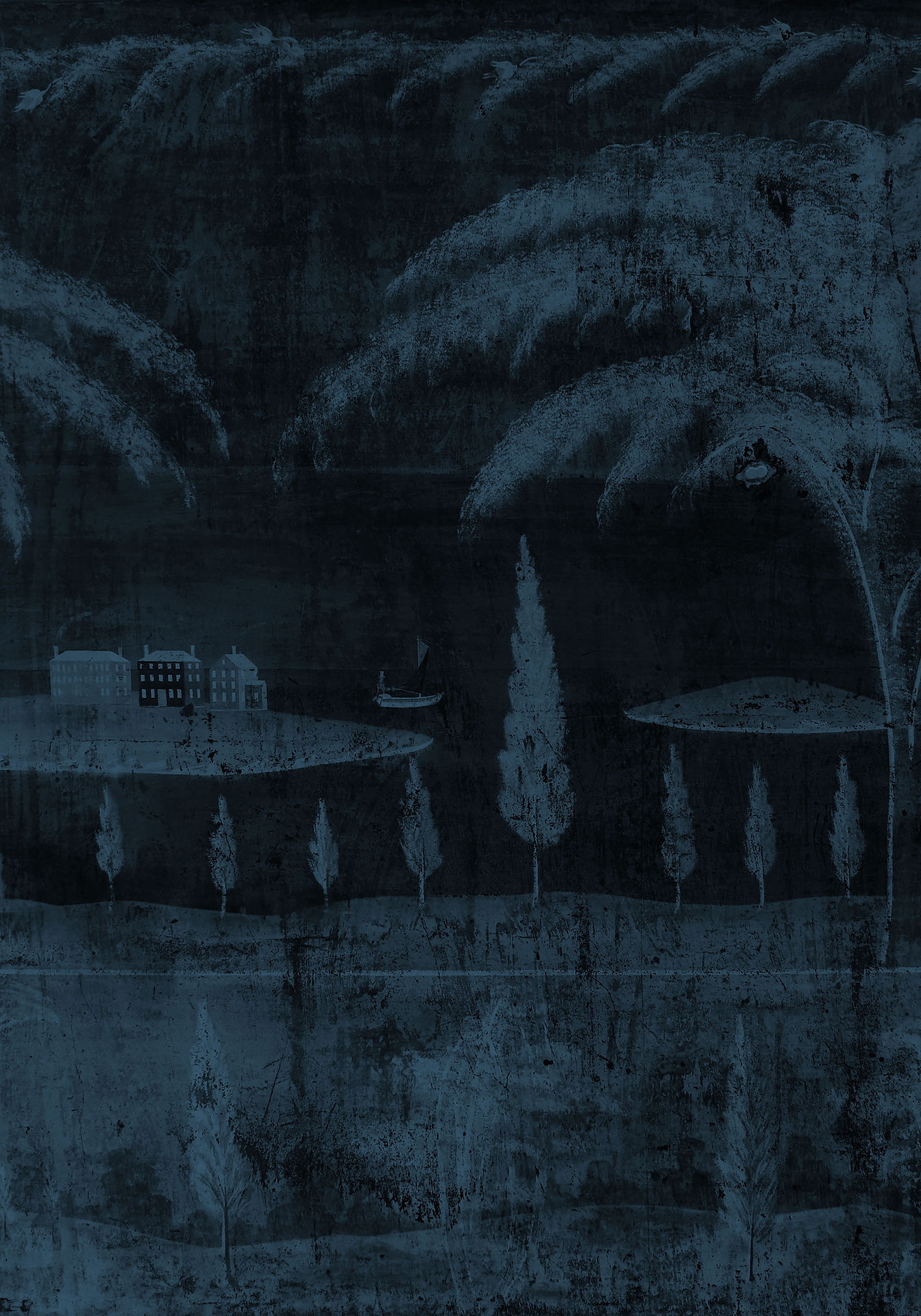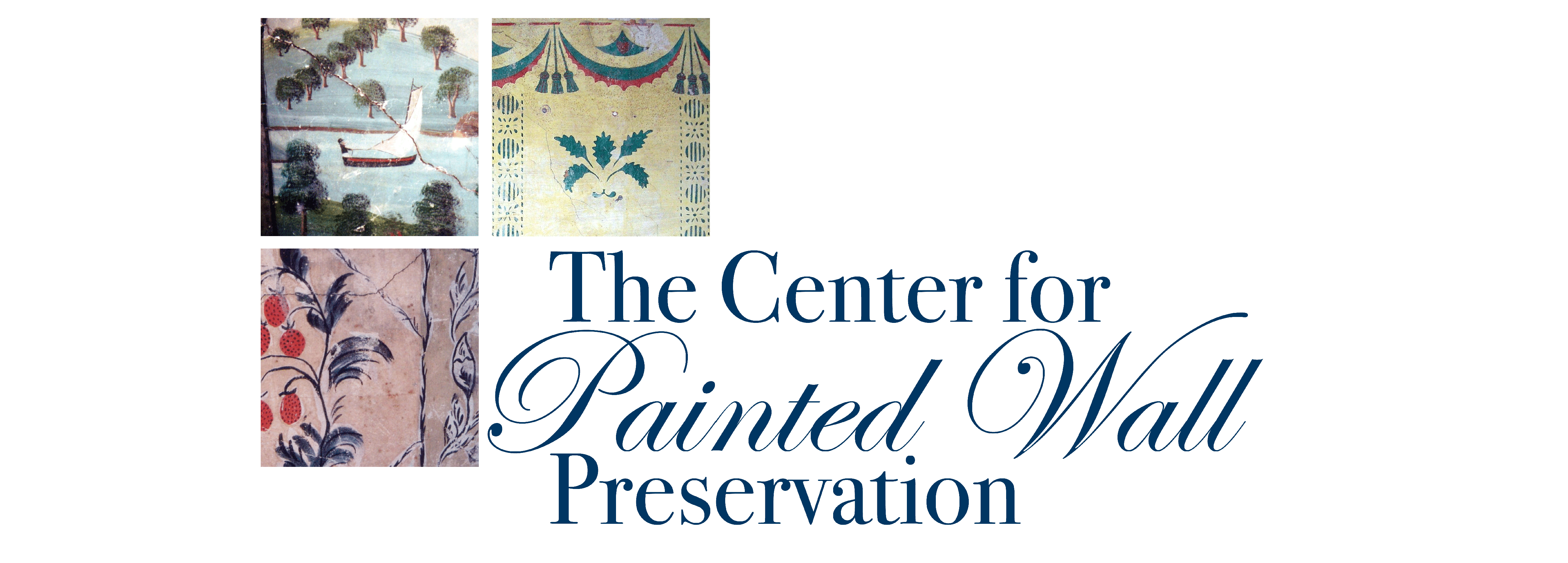
Littleton Inn
About This Tour
Explore this early example of mural painting and examine how the unknown artist integrated the scenes into the architectural details of this room. The murals include an assortment of animals stenciled with red paint and are finished with a stenciled frieze!

The Littleton Inn was a busy place, especially during the winter when it was a stopping point for trappers and hunters in this remote region of the upper White Mountains.
The Littleton Inn
The Littleton Inn was built by James Williams (1759-1822) of Andover, Massachusetts around 1789 in Littleton, New Hampshire. Like many other settlers during the late eighteenth century, Williams moved north in search of land and opportunity. Williams supposedly arrived in the town on an ox sled with his wife, Susanna Williams (1767-1820), and a daughter, also named Susanna. He became a citizen of Littleton in 1789 and purchased land from his brother-in-law, Ebenezer Pingree. Williams used the land to farm and operated a tavern business from his log cabin home, hosting visitors in what was known as the Littleton Inn. He quickly gained prominence and in 1790 was elected
to serve as a selectman and in 1794 he was elected to represent the wider region in the state legislature. The house operated as an inn until Williams’ death in 1822. Today, it is held in private hands. At some point, the house’s exterior was renovated, with simple ornaments around the doorway that do not point to a specific architectural style.

The murals in the Littleton Inn are framed by the architectural elements in the space. These murals are early examples, and the art has a naive and primitive quality. The mountains were painted with wide brush strokes and stenciled animals accent the scenes.
About the Artist
It is believed that these walls were painted between 1800-10, making them early examples of New England mural painting. While the name of the artist who painted the murals in the Littleton Inn is unknown, it is believed by mural scholars that there are at least four additional houses with murals painted by the same hand. These murals are located within fifty miles of each other — four are located in New Hampshire in the towns of Littleton, Thornton, Lisbon, and Landaff, and the last is in East Hardwick, Vermont. When attempting to connect multiple walls to the same artist, location is an important aspect to consider. Murals can often be found in clusters as artists traveled from town to town looking for work. In other instances, artists painted walls near where they lived and worked a primary job, with mural painting serving as supplementary income. In any case, it is common to find groups of murals by the same artist located in close proximity.
The Littleton Inn walls include motifs that can also be seen in the other four murals attributed to this artist. Motifs such as rounded hills, different animals (especially exotic ones), birds, soldiers, buildings, and vermillion-colored hanging pieces of meat can be found in most examples of this unknown artist’s work. These common elements help scholars identify and connect murals to one hand.
The artist’s skills and techniques are clearly less developed than later artists such as the itinerant artist Rufus Porter (1782-1884) and his nephew, Jonathan D. Poor (1807-45). Interestingly, Porter completed a mural in North Haverhill, New Hampshire — a town not too far from the region where this artist worked — allowing for the possibility that Porter could have viewed these murals himself.
About the Art

This hand-painted camel has a Hessian Soldier seated between its humps. Exotic animals, including camels, elephants and lions, were brought to the interior of New England for townsfolk to view and enjoy, a precursor to the traveling circus. They were usually displayed at the local tavern or inn.
The mural in the second-floor bedroom of the Littleton Inn is excellently preserved as it has never been covered with wallpaper or overpainted. Its color palette is very limited, with the artist working in greens and grays with small additions of vermillion. The stenciled frieze found here is a rare (but not unheard of) addition to a muraled room.
While later Porter School artists depicted idealistic, but realistic, New England scenes within their murals, the presence of a camel and other exotic animals in this artist’s work makes the scenes more fantastical, or places them somewhere else in the world. The artist, however, could also be referencing the late eighteenth- and early nineteenth-century practice of exhibiting these types of animals at local taverns. The Captain Drayton House mural in Landaff, New Hampshire even has a circus — an emerging form of entertainment during this time — painted within its landscape scene.

